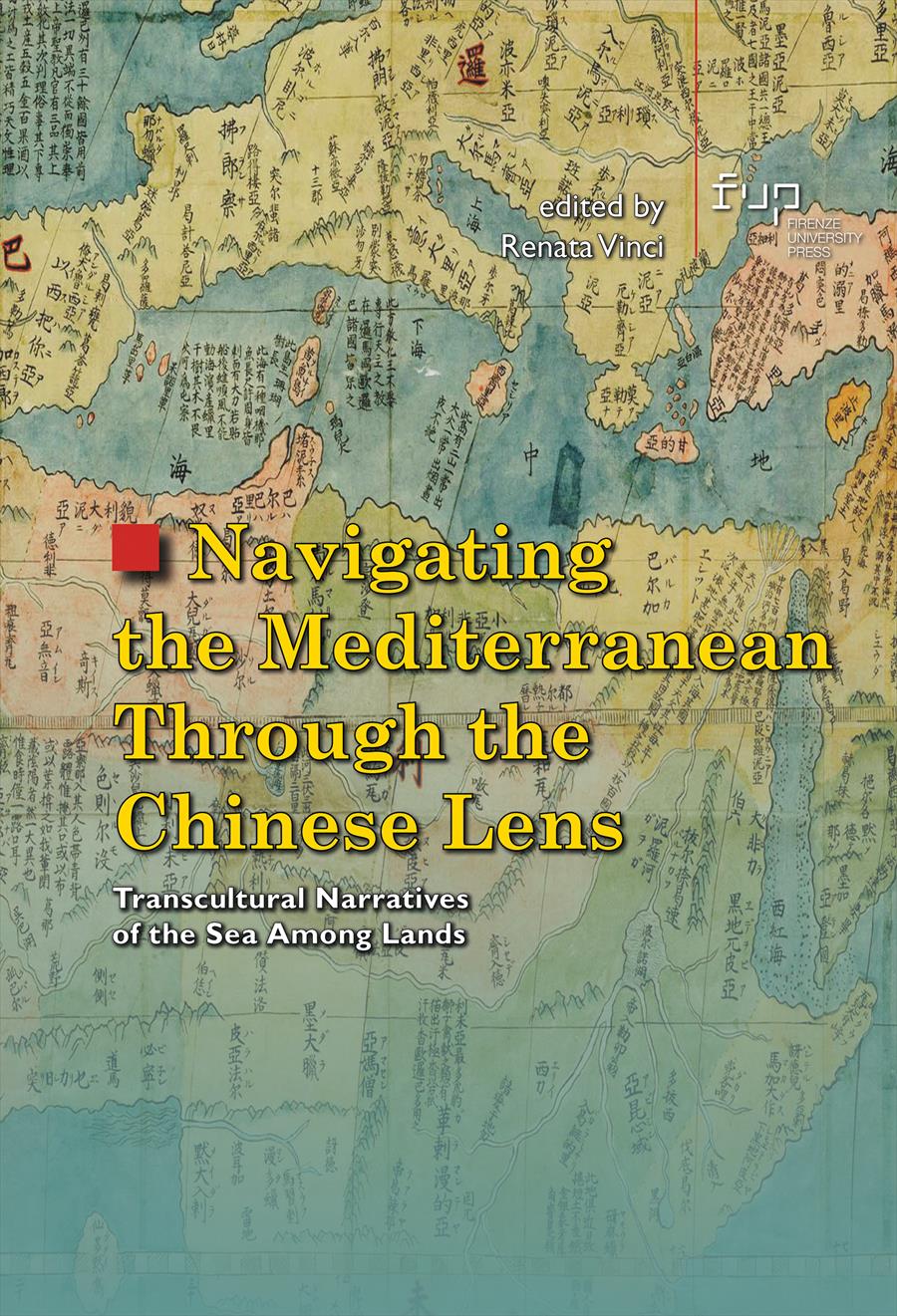- Navigating the Mediterranean Through the Chinese Lens
- Edited by Renata Vinci
Roman Law in Late Qing and Early Republican Chinese Sources: A Founding Element of the Mediterranean and Western Civilisation
- Lara Colangelo
- © 2024 Author(s) |
- CC BY 4.0
- DOI: 10.36253/979-12-215-0598-6.09
One aspect still scarcely investigated in the literature on the reception of Roman law in China is the image of the Romanist legal tradition emerging from Chinese sources during the late Qing and early Republican Era. This was a fundamental phase in China’s decision to draw inspiration from the continental system for legal reform. A significant element, still under-examined, is the perception of the role exerted by Roman law well beyond the Italic territory, primarily within the vast cultural area of the Mediterranean. This chapter, therefore, aims to highlight how Roman law is presented in Chinese sources of the aforementioned period not only as an element connected with Rome and the Italic peninsula, but as a transnational element that transcends Italic borders, influencing the entire Western and Mediterranean culture.
- Keywords:
- Roman Law; Reception of the Romanist Legal Tradition in China; Roman Law in Chinese Sources; The Mediterranean in Chinese sources; Roman Law and the Mediterranean,
University of Chieti-Pescara G. D'Annunzio, Italy - ORCID: 0000-0003-0284-1359
- Abulafia, David. 2011. The Great Sea: A Human History of the Mediterranean. Oxford: Oxford University Press.
- Braudel, Fernand. 1985. La Méditerranée. L’Espace et l’Histoire. Paris: Flammarion.
- Braudel, Fernand. 1986. La Méditerranée. Les Hommes et l’Héritage. Paris: Flammarion.
- Braudel, Fernand. 1998. Les Mémoires de la Méditerranée. Paris: De Fallois.
- Braudel, Fernand. 2001. Memory and the Mediterranean. New York: Knopf Doubleday Publishing Group.
- Casavola, Franco. 2004. “Il tempo del diritto”. Studium 100, 4-5: 687-692.
- Colangelo, Lara. 2015. “L’introduzione del diritto romano in Cina: evoluzione storica e recenti sviluppi relativi alla traduzione e produzione di testi e all’insegnamento”. Roma e America. Diritto romano comune 36: 175-210.
- Colangelo, Lara. 2020. “Ershi shiji chuqi Zhongguo dui Luoma fa tixi de jishou: zui zao yong zhongwen xiezuo de Luoma fa jiaokeshu yiji Zhongguo de fadianhua guocheng 二十世纪初期中国对罗马法体系的继受: 最早用中文写作的罗马法教科书以及中国的法典化过程”. In Luoma fa, Zhongguo fa yu minfa fadianhua (wenxuan). Ershiyi shiji minfa dian de kexue tixi 罗马法、中国法与民法法典化(文选)—— 二十一世纪民法典的科学体系, edited by Fei Anling 费安玲 and Sandro Schipani, 76-87. Pechino: Zhongguo Zhengfa Daxue chubanshe.
- Colangelo, Lara. 2022. “La recezione della tradizione giuridica romanistica in Cina: il diritto romano negli scritti dei letterati di epoca tardo Qing”. InVerbis. Lingue, letterature, culture 12 (1): 117-130.
- Creighton, Mandell. 1879. History of Rome. London: MacMillan and co.
- Creighton, Mandell [克赖顿]. 2014 (first ed.: 1886). ‘Xila zhilüe’ ‘Luoma zhilüe’ jiaozhu 《希臘誌略》《羅馬誌略》校注. Translated by Joseph Edkins. Beijing: The Commercial Press.
- Horden, Peregrine and Purcell, Nicholas. 2006. “The Mediterranean and ‘the New Thalassology’.” The American Historical Review 111 (3): 722–40.
- Giliberti, Giuseppe. 2015. “L’ius gentium romano come ordinamento transnazionale”. Cultura giuridica e diritto vivente 2: 1-14.
- Huang, Youchang 黄右昌. 2006 (first ed. 1930). Luoma fa yu xiandai 罗马法与现代. Beijing: Zhongguo fangzheng chubanshe.
- Ivetic, Egidio. 2022. Il Mediterraneo e l’Italia. Catanzaro: Rubettino editore.
- Ma Jianzhong 馬建忠. 1896. Shike zhai ji yan. Accessed August 30, 2024. https://www.zhonghuadiancang.com/leishuwen- ji/8246/166875.html.
- Matvejević, Predrag. 2006. Breviario mediterraneo. Milano: Garzanti.
- Norwich, John. 2006. The Middle Sea: A History of the Mediterranean. New York: Doubleday.
- Talamanca, Mario. 1989. “Editto del pretore, ius honorarium e ius civile”, in Lineamenti di storia del diritto romano, edited by Mario Talamanca, 171-82. Milano: Giuffrè editore.
- Tusa, Sebastiano. 2014. “Attualità del Mediterraneo di Braudel.” In Ricordando Braudel. Mediterraneo, un mare condiviso, edited by Angela Accardi, 96-105. Palermo: Regione siciliana, Assessorato dei beni culturali e dell’identità siciliana, Dipartimento dei beni culturali e dell’identità siciliana.
- Wang, Jian 王健. 2002. “Luoma fa chuanbo zhongguo wenxian jikao 罗马法传播中国文献稽考”. In Luoma fa yu xiandai minfa 罗马法与现代民法, edited by Xu Guodong 徐国栋, 59-98. Beijing: Zhongguo fazhi chubanshe.
- Yu, Taishan. 2013. China and the Ancient Mediterranean World: A Survey of Ancient Chinese Sources. Sino-Platonic Papers 242. Philadelphia: Department of Asian and Middle Eastern Studies, University of Pennsylvania.
Chapter Information
Chapter Title
Roman Law in Late Qing and Early Republican Chinese Sources: A Founding Element of the Mediterranean and Western Civilisation
Authors
Lara Colangelo
Language
English
DOI
10.36253/979-12-215-0598-6.09
Peer Reviewed
Publication Year
2024
Copyright Information
© 2024 Author(s)
Content License
Metadata License
Bibliographic Information
Book Title
Navigating the Mediterranean Through the Chinese Lens
Book Subtitle
Transcultural Narratives of the Sea Among Lands
Editors
Renata Vinci
Peer Reviewed
Number of Pages
138
Publication Year
2024
Copyright Information
© 2024 Author(s)
Content License
Metadata License
Publisher Name
Firenze University Press
DOI
10.36253/979-12-215-0598-6
ISBN Print
979-12-215-0597-9
eISBN (pdf)
979-12-215-0598-6
eISBN (epub)
979-12-215-0599-3
Series Title
Studi e saggi
Series ISSN
2704-6478
Series E-ISSN
2704-5919
